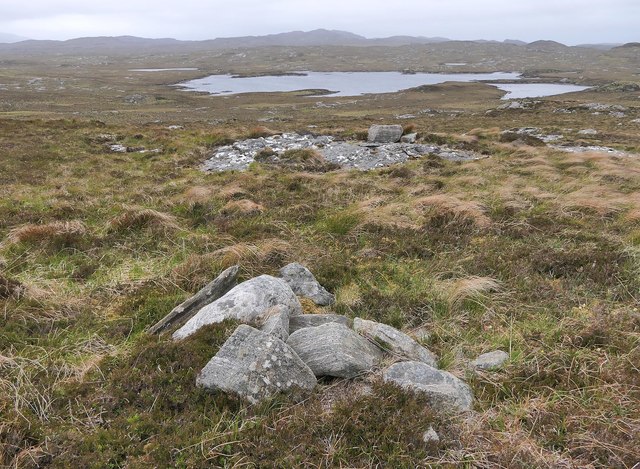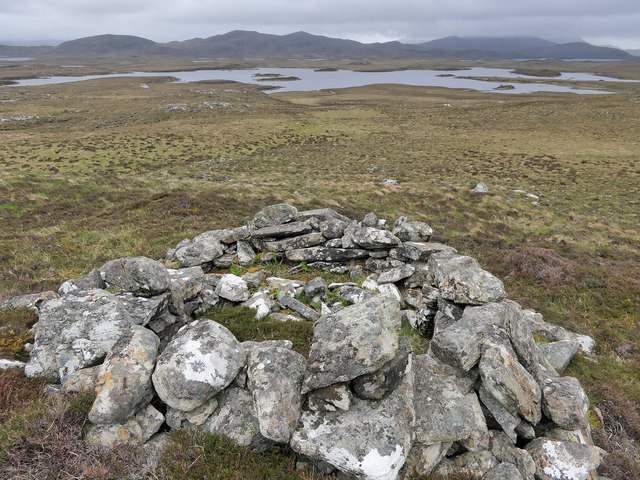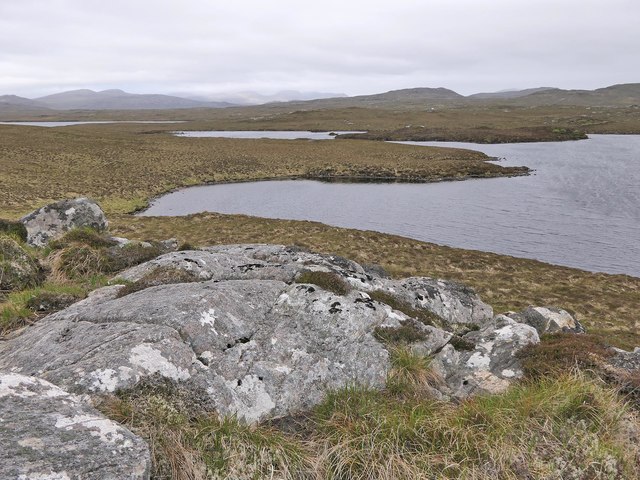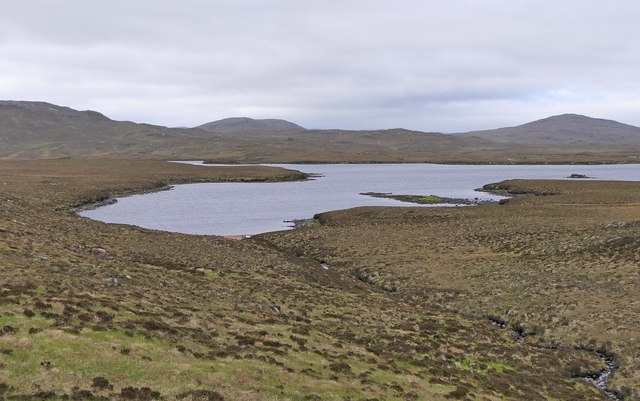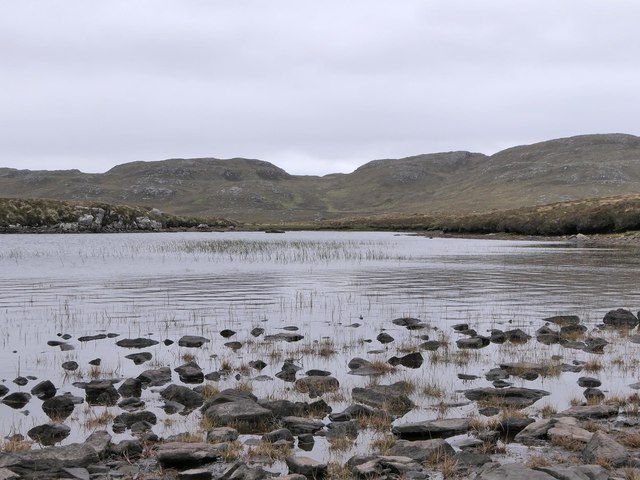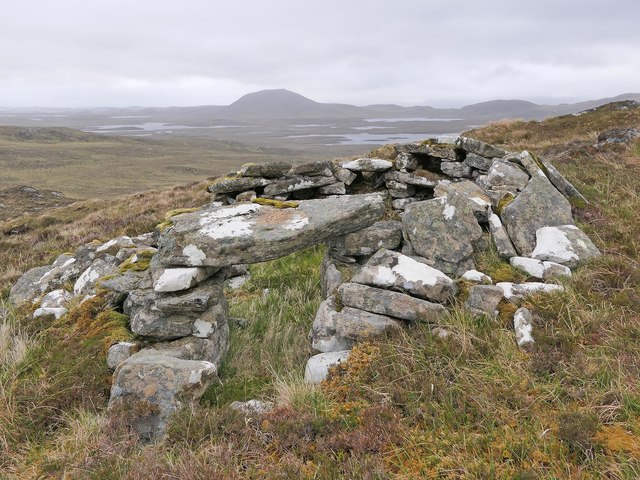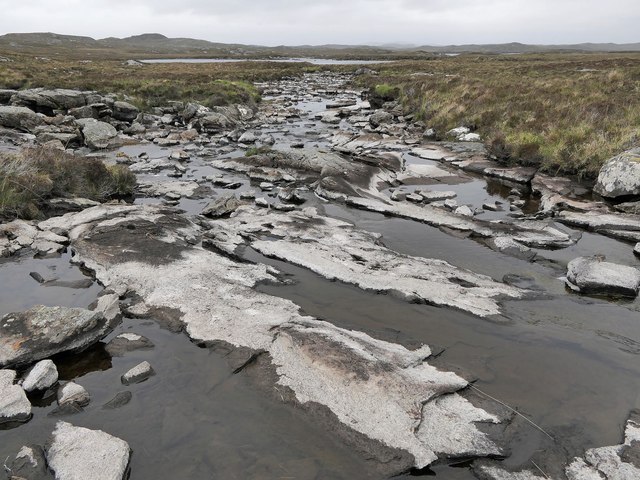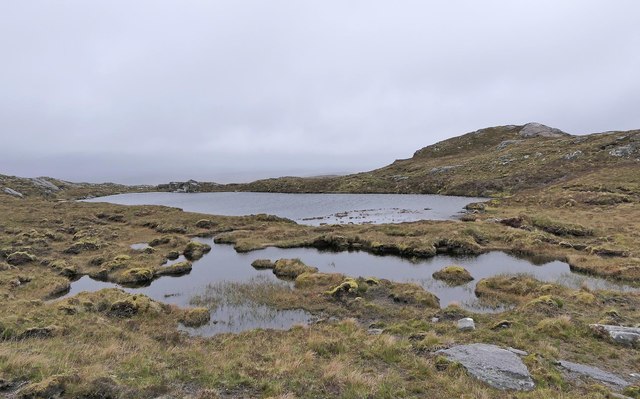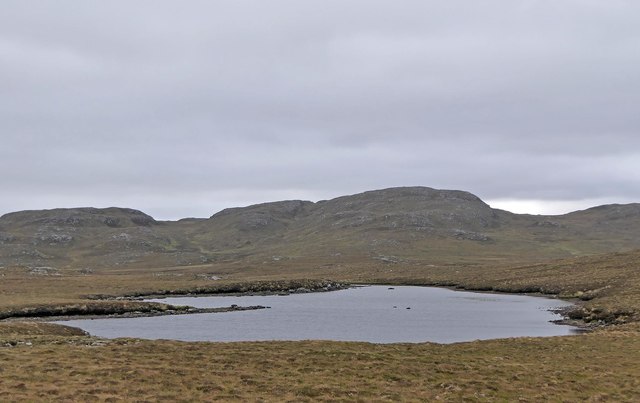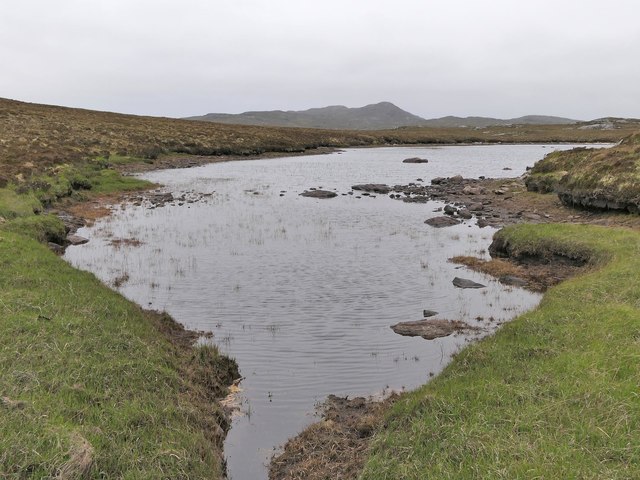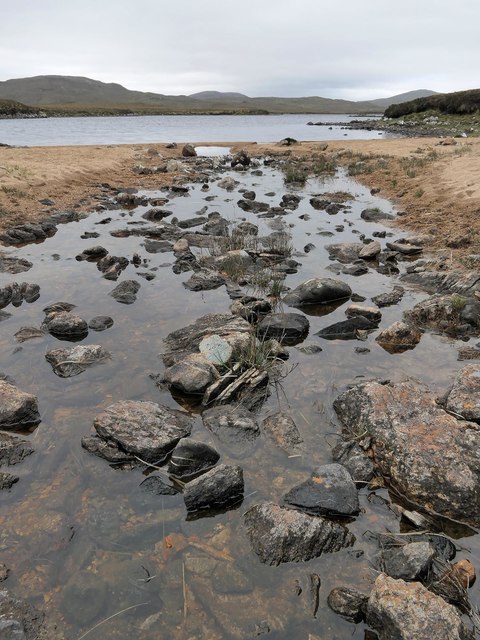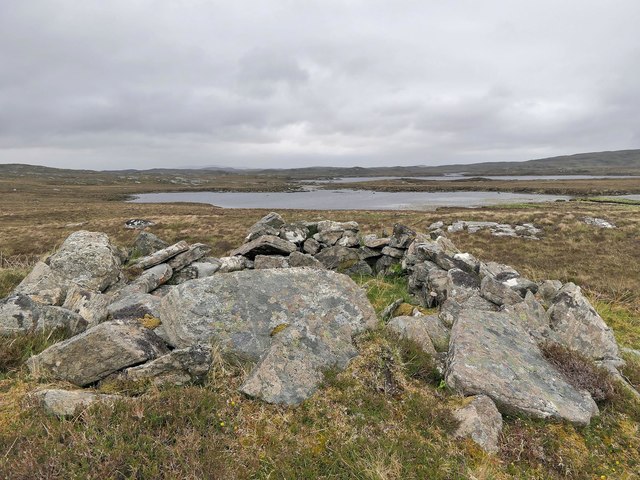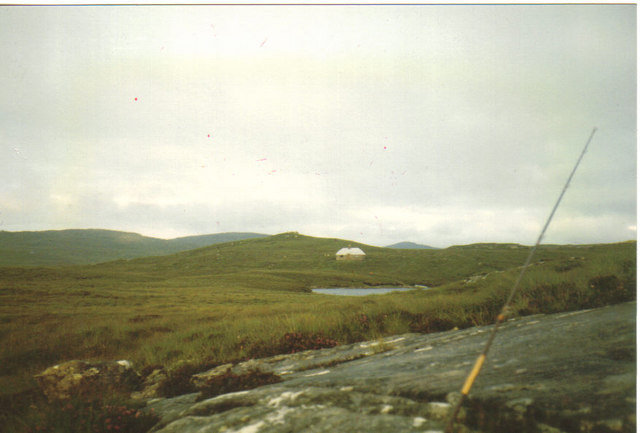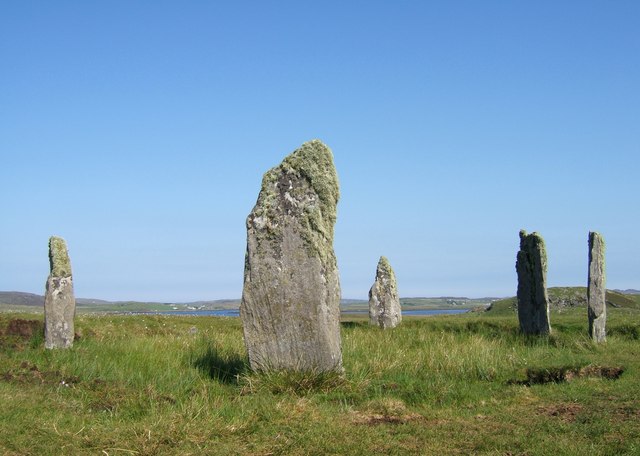Loch an Easa Ghil
Lake, Pool, Pond, Freshwater Marsh in Ross-shire
Scotland
Loch an Easa Ghil
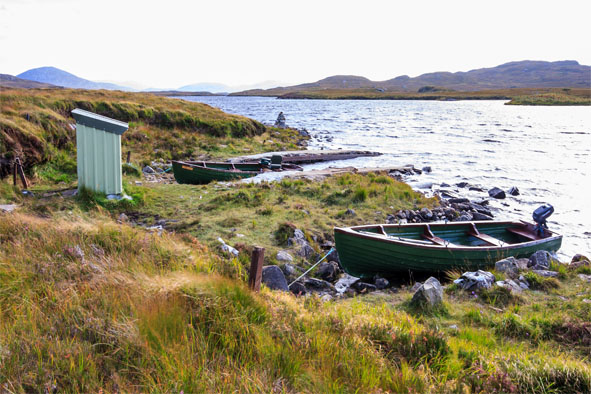
Loch an Easa Ghil is a picturesque freshwater loch located in the county of Ross-shire, Scotland. Nestled amidst the rugged beauty of the Scottish Highlands, this stunning body of water is a popular destination for nature enthusiasts and outdoor adventurers alike.
Measuring approximately 2 kilometers in length and 1 kilometer in width, Loch an Easa Ghil boasts crystal-clear waters that shimmer under the sunlight. The loch is fed by several small streams and springs, ensuring a constant supply of fresh, unpolluted water. The surrounding landscape is characterized by rolling hills covered in heather and scattered birch trees, creating a tranquil and idyllic setting.
The loch is home to a diverse range of aquatic life, including various species of fish such as brown trout, rainbow trout, and Arctic char. Anglers often flock to Loch an Easa Ghil to test their skills and enjoy a day of fishing in a serene environment.
On the eastern shore of the loch, there is a small freshwater marsh teeming with vibrant plant life. This marsh provides a habitat for numerous bird species, including ducks, moorhens, and waders. Birdwatchers can often spot these feathered creatures as they go about their daily activities.
Access to Loch an Easa Ghil is relatively easy, with a car park located nearby. Visitors can take leisurely walks along the shore, enjoying the breathtaking scenery and the peaceful ambiance. The loch also serves as a starting point for hiking trails that wind through the surrounding hills, offering panoramic views of the Scottish Highlands.
In conclusion, Loch an Easa Ghil is a natural gem in Ross-shire, Scotland, offering a tranquil and picturesque setting for outdoor enthusiasts to immerse themselves in the beauty of the Scottish Highlands.
If you have any feedback on the listing, please let us know in the comments section below.
Loch an Easa Ghil Images
Images are sourced within 2km of 58.127555/-6.7563998 or Grid Reference NB2025. Thanks to Geograph Open Source API. All images are credited.
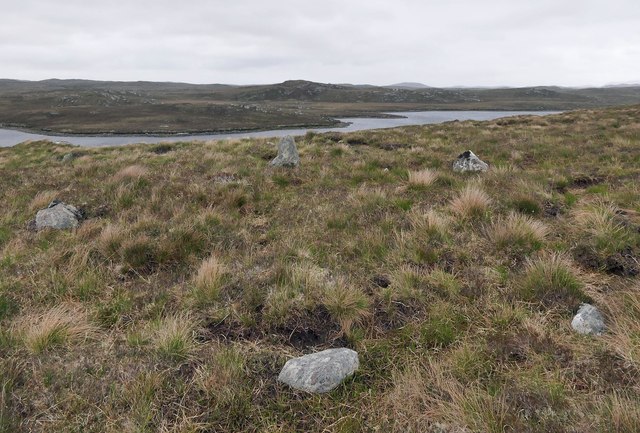
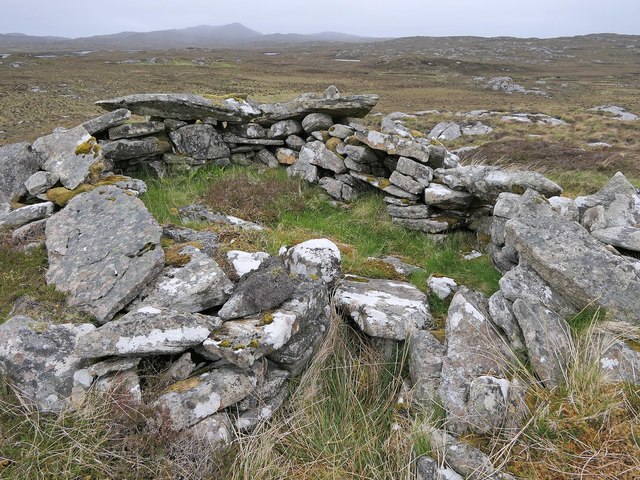
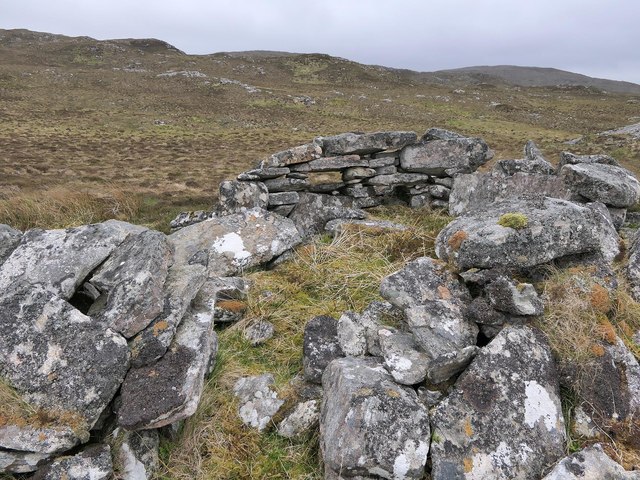
Loch an Easa Ghil is located at Grid Ref: NB2025 (Lat: 58.127555, Lng: -6.7563998)
Unitary Authority: Na h-Eileanan an Iar
Police Authority: Highlands and Islands
What 3 Words
///contracts.embarks.shadows. Near Leurbost, Na h-Eileanan Siar
Related Wikis
Eilean Mòr, Loch Langavat
Eilean Mòr is an island in Loch Langavat on the Isle of Lewis in the Outer Hebrides of Scotland. == Footnotes ==
Callanish IV
The Callanish IV stone circle (Scottish Gaelic: Ceann Hulavig) is one of many megalithic structures around the better-known (and larger) Calanais I on...
Gisla Hydro-Electric Scheme
Gisla Hydro-Electric Scheme was a small scheme promoted by the North of Scotland Hydro-Electric Board on the Isle of Lewis, Outer Hebrides, Scotland. It...
Garynahine
Garynahine (Scottish Gaelic: Gearraidh na h-aibhne) is a settlement on Lewis, in the Outer Hebrides, Scotland. Garynahine is situated at a T-junction where...
Have you been to Loch an Easa Ghil?
Leave your review of Loch an Easa Ghil below (or comments, questions and feedback).
